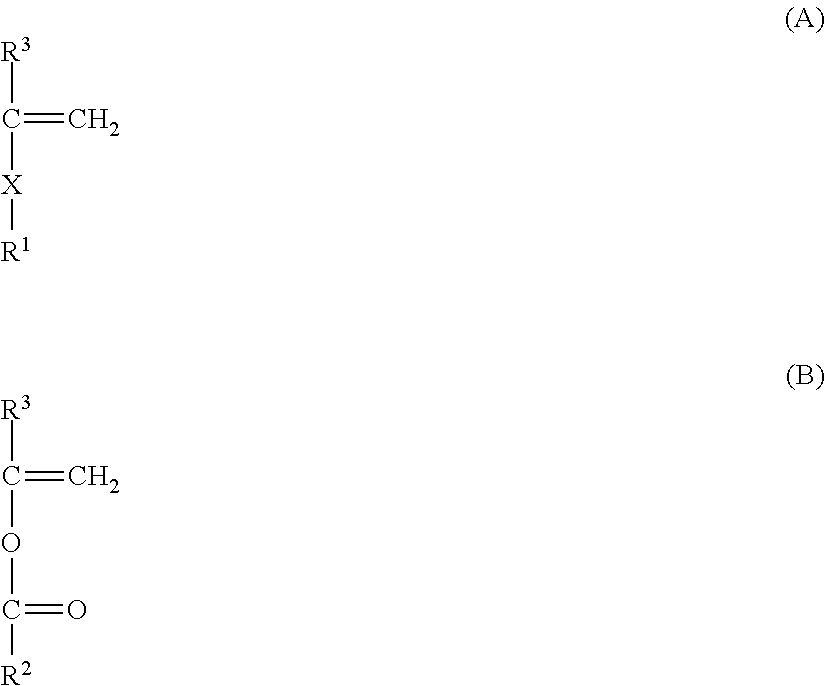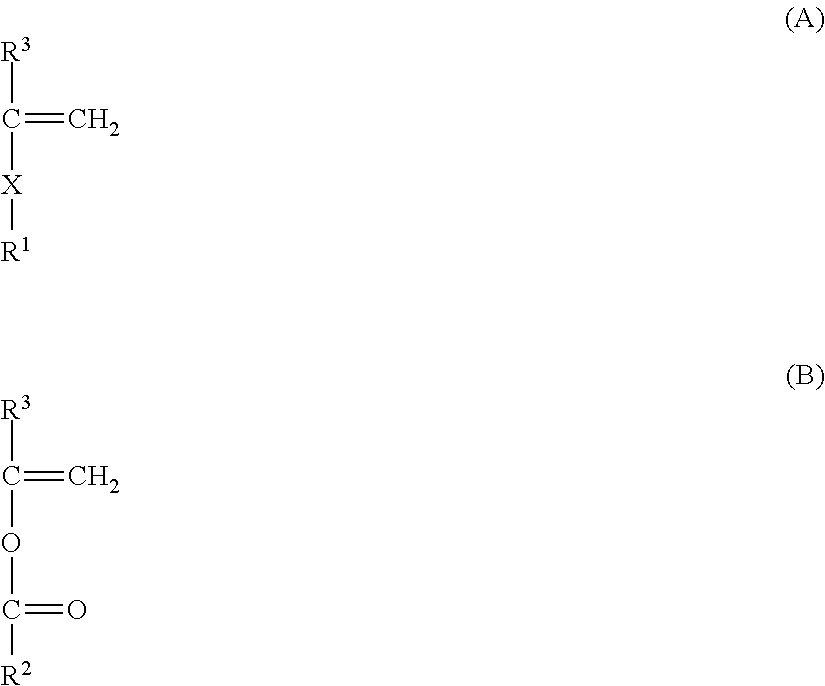Toner and two-component developer
a technology of toner and component, applied in the field of toner and two-component developer, can solve the problems of slow charge rising of toner using crystalline vinyl resin as binder resin, and achieve the effects of increasing the rate of charge transfer, and increasing the charge rising speed
- Summary
- Abstract
- Description
- Claims
- Application Information
AI Technical Summary
Benefits of technology
Problems solved by technology
Method used
Image
Examples
example 1
Manufacturing Example 1 of Zinc Oxide Fine Particle
[0270]200 parts of zinc oxide were added to an aqueous hydrochloric acid solution consisting of 500 parts of 35 mass % hydrochloric acid and 700 parts of purified water, and the zinc oxide was completely dissolved to prepare a zinc chloride aqueous solution. Meanwhile, 460 parts of ammonium carbonate were dissolved in 3,000 parts of purified water to separately prepare an aqueous solution of ammonium bicarbonate. The zinc chloride aqueous solution was added to the ammonium bicarbonate aqueous solution over the course of 60 minutes to produce a sediment. The sediment was thoroughly washed, separated from the liquid phase, and dried for 5 hours at 130° C.
[0271]Next, the dried powder was crushed in an agate mortar. The crushed powder was heated to 500° C. at a rate of 200° C. / hour as a mixed gas of 0.21 L / minute of nitrogen gas and 0.09 L / minute of hydrogen gas was supplied. This was maintained as is for 2 hours and then cooled to room...
synthesis example 1
of Amorphous Resin Other Than Polymer A
[0310]50 parts of xylene were placed in an autoclave, nitrogen was substituted, and the temperature was raised to 185° C. in a sealed state under stirring. A mixed solution of 95 parts of styrene, 5 parts of n-butyl acrylate, 5 parts of di-t-butyl peroxide and 20 parts of xylene was dropped in continuously for 3 hours and polymerized with the internal temperature of the autoclave controlled at 185° C. This was then maintained at the same temperature for 1 hour to complete polymerization, and the solvent was removed to obtain an amorphous resin 1 that was not the polymer A. The resulting resin had a weight-average molecular weight (Mw) of 3,500, a softening point (Tm) of 96° C. and a glass transition temperature (Tg) of 58° C.
Manufacturing Example of Polymer Fine Particle 1 Dispersion
[0311]
Toluene (Wako 300partsPure Chemical)Polymer 1100parts
[0312]These materials were weighed precisely, mixed, and dissolved at 90° C.
[0313]Separately, 5.0 parts o...
PUM
| Property | Measurement | Unit |
|---|---|---|
| Temperature | aaaaa | aaaaa |
| Percent by mass | aaaaa | aaaaa |
| Frequency | aaaaa | aaaaa |
Abstract
Description
Claims
Application Information
 Login to View More
Login to View More - R&D
- Intellectual Property
- Life Sciences
- Materials
- Tech Scout
- Unparalleled Data Quality
- Higher Quality Content
- 60% Fewer Hallucinations
Browse by: Latest US Patents, China's latest patents, Technical Efficacy Thesaurus, Application Domain, Technology Topic, Popular Technical Reports.
© 2025 PatSnap. All rights reserved.Legal|Privacy policy|Modern Slavery Act Transparency Statement|Sitemap|About US| Contact US: help@patsnap.com



